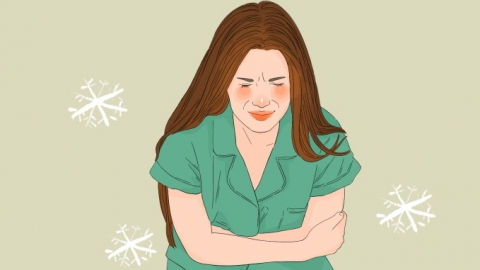Is a body temperature of 35.8°C in women considered to be cold body temperature?
Generally speaking, whether a woman's body temperature of 35.8°C indicates "cold body constitution" (体寒) depends on the specific circumstances and requires individual analysis, as detailed below:

If a body temperature of 35.8°C occurs only occasionally, and mostly happens in cold external environments, with insufficient clothing, or when moving from a cold area into a warmer indoor space, it may not necessarily indicate cold body constitution. In such cases, the low body temperature is often due to the external cold affecting the body's balance between heat dissipation and warmth retention. The body temperature can gradually return to the normal range after promptly adding clothing or entering a warmer environment, and is usually not accompanied by persistent symptoms such as cold hands and feet or sensitivity to cold.
If a body temperature of 35.8°C persists and is frequently accompanied by symptoms such as cold extremities, sensitivity to cold, and easy fatigue, it may indicate cold body constitution. Individuals with cold body constitution often have insufficient yang energy, making it difficult to maintain normal body temperature, resulting in consistently low body temperature. Symptoms tend to become more pronounced in cold environments and may also affect blood and qi circulation, leading to other discomforts.
Assessment should consider both the duration of low body temperature and accompanying physical symptoms. In daily life, it is important to stay warm and avoid prolonged exposure to cold environments. Consuming warming foods appropriately may help maintain normal body temperature. If low body temperature persists and is accompanied by significant discomfort, it is recommended to consult a healthcare professional to identify the underlying cause and receive appropriate guidance and调理 (regulation/treatment).




